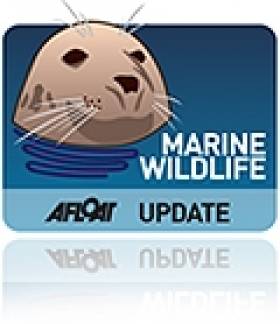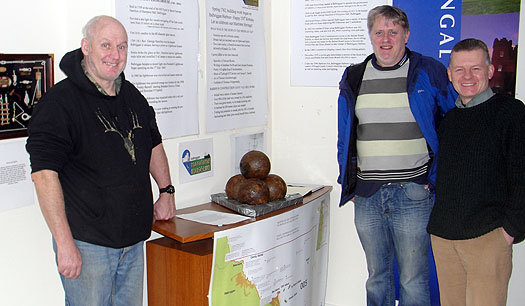Displaying items by tag: Balbriggan Maritime Museum
#DolphinExhibition - Balbriggan Maritime Museum has opened a new public display in Balbriggan Tourist Office on Quay Street near Balbriggan Harbour.
On show is a Whale and Dolphin Exhibition, bones, models and general information to celebrate the biodiversity of sea mammals off the coast. This follows the previous popular 'Cannon Balls Exhibition'.
Appropriately, 'Water & Biodiversity' is the theme of the 2013 International Day for Biological Diversity which falls on Wednesday, 22nd May.
Balbriggan Maritime Museum volunteers have assembled bones from many sea animals, such as a vertebra from a Fin Whale, the second largest whale in the world growing to 88ft in length. No wonder this bone is too heavy for one person to lift!
The Humpback Whale model, in real life, is about half the length of a Fin Whale and weighs only 40 tonnes! Even so, Humpback Whales, which are seen in the Irish Sea, would be too big to fit into Balbriggan Courthouse!
Smaller skulls from Common Dolphin, Pilot Whale and Grey Seal, as well as a Minke Whale jawbone can also be examined during May when this Whale and Dolphin Exhibition will be on display from Tuesday to Sunday when the Balbriggan Tourist Office is open.
Display of Napoleonic Cannon Balls to Fire Campaign for proposed Balbriggan Maritime Museum
#MuseumCampaign – Fisherman who donated four 28-pound cast iron cannon balls of over 200 years old, are in need of a 'permanent' home as the Balbriggan Maritime Museum is currently based out of a local tourist office , writes Jehan Ashmore.
The cannon balls which were located within a quarter of a mile on the seabed, may be significant, in that they were possibly fired from a Martello Tower, as these cannon balls were too heavy for most warships in service in the early 19th century.
It is known that no Martello tower in Ireland (built from 1805) has ever fired its cannon in anger. However, could these cannon ball discoveries have resulted from the testing of the Martello Tower mounted guns in anticipation of a French invasion?
Whatever is the explanation, the display of the prized Napoleonic cannon balls, will no doubt generate much interest, however many more maritime related exhibits from Fingal's rich maritime heritage remains out of sight.
"We are grateful to Balbriggan Tourist Office for the use of part of their premises in Quay Street to give the public a sample of the wealth of historic items which are currently in cold storage", said a former Green Party leader Trevor Sargent, who is chairperson of Balbriggan Maritime Museum.
Trevor Sargent, chairperson (right) of the museum stands beside the display of Napoleonic cannon balls
Today marks the museum's first anniversary, when Minister for Heritage Minister for Arts, Heritage and the Gaeltacht, Jimmy Deenihan TD, opened a one-day long 'pop-up' version of the maritime museum in Balbriggan, at the Bracken Court Hotel. Since then, until a proper museum building can be secured, there will be a unique rotating exhibition on display, albeit using limited space, with the kind support of Balbriggan Tourist Office.
Johnny Woodlock, marine conservationist and treasurer of the museum committee said 'We urge everybody to visit the latest historic display in the Balbriggan Tourist Office". He called on those viewing the display to leave a comment in the visitor's book so to assist in drawing a stronger campaign to establish a proper maritime museum, benefitting tourism and the public in general.
For further details about the proposed museum, contact Frank Duffy, Honorary Secretary of the Balbriggan Maritime Museum on 083 114 65 31 and www.balbrigganmaritimemuseum.com































































